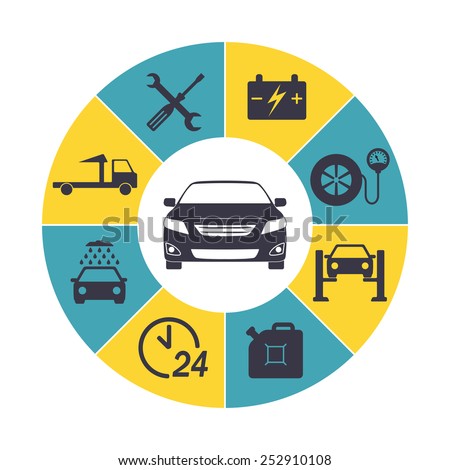Understanding Your Car'S Caution Lights: What Do They Really Mean?
Understanding Your Car'S Caution Lights: What Do They Really Mean?
Blog Article
Material By-Lauritsen Torres
When you're behind the wheel, those radiant caution lights on your control panel can be a bit complicated. Do you understand what they're trying to tell you concerning your automobile's health and wellness? Understanding the relevance of these lights is crucial for your security and the durability of your lorry. So, please click the next post following time among those lights turns up, wouldn't you wish to decipher its message properly and take the essential steps to address it?
Common Caution Lights and Interpretations
Determine common warning lights in your cars and truck and understand their significances to guarantee secure driving.
One of the most normal caution lights include the check engine light, which indicates issues with the engine or emissions system. If this light comes on, it's vital to have your car inspected immediately.
detailing shed cautioning light indicates low oil pressure, needing immediate interest to prevent engine damage.
A blinking battery light might suggest a defective billing system, possibly leaving you stranded otherwise dealt with.
The tire pressure surveillance system (TPMS) light alerts you to reduced tire stress, impacting automobile security and fuel efficiency. Neglecting this can result in harmful driving problems.
The abdominal light shows a problem with the anti-lock stopping system, jeopardizing your capacity to quit swiftly in emergency situations.
Lastly, the coolant temperature cautioning light warns of engine getting too hot, which can cause serious damage otherwise dealt with quickly.
Recognizing these common warning lights will assist you deal with issues immediately and maintain risk-free driving problems.
Relevance of Prompt Focus
Recognizing the typical caution lights in your vehicle is just the initial step; the value of without delay attending to these cautions can't be emphasized enough to guarantee your security on the road.
When a warning light illuminates on your control panel, it's your auto's means of interacting a prospective problem that requires attention. Overlooking these warnings can lead to extra serious issues later on, compromising your safety and potentially costing you extra in repairs.
Trigger attention to alerting lights can prevent breakdowns and accidents. For instance, a blinking check engine light could show a misfire that, if left neglected, could trigger damage to the catalytic converter. Addressing this promptly can save you from a costly fixing.
Similarly, a brake system cautioning light might indicate low brake liquid or used brake pads, essential parts for your safety when driving.
DIY Troubleshooting Tips
If you discover a caution light on your dashboard, there are a few DIY repairing tips you can attempt before seeking expert assistance.
The primary step is to consult your automobile's manual to understand what the certain caution light shows. Sometimes the concern can be as straightforward as a loose gas cap causing the check engine light. Tightening up the gas cap may resolve the trouble.
One more typical concern is a low battery, which can trigger numerous cautioning lights. Examining the battery connections for rust and ensuring they're secure might repair the problem.
If a caution light lingers, you can attempt resetting it by separating the vehicle's battery for a couple of minutes and afterwards reconnecting it. Additionally, examining your car's fluid degrees, such as oil, coolant, and brake liquid, can help fix advising lights connected to these systems.
Verdict
In conclusion, comprehending your auto's caution lights is important for keeping your car running smoothly and safely. By quickly dealing with these informs and recognizing what they mean, you can avoid expensive repairs and prospective malfunctions.
Bear in mind to consult your car's guidebook for specific information on each warning light and do something about it accordingly to guarantee a trouble-free driving experience.
Remain notified, remain safe when driving!
